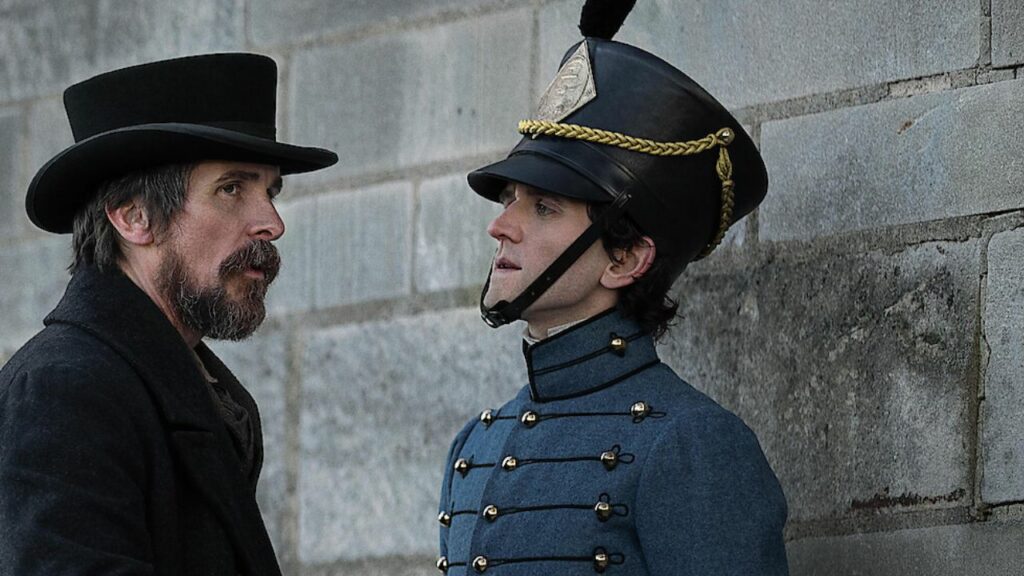Yes, Edgar Allan Poe really attended the United States Military Academy in West Point, New York, like in The Pale Blue Eye. He went there in 1830. Follow to know what actually happened to Edgar Allan Poe in West Point in detail.
The Pale Blue Eye, a Netflix murder mystery movie, centers on the killings of Leroy Fry and Randolph Ballinger, two young cadets at the New York-based United States Military Academy. The Academy hires renowned detective Augustus Landor to investigate Fry’s death. Landor does his utmost to prevent a third victim by arresting the killer when Ballinger also dies. To investigate the killings, he works with Edgar Allan Poe, a young cadet, and published poet.
Since Edgar Allan Poe is both a real-life person and one of the greatest writers of all time, viewers wonder if he really attended the Military Academy in West Point like in the movie. Well, here’s everything you need to know.
Yes, Edgar Allan Poe Really Attended the United States Military Academy in West Point in 1830: The Pale Blue Eye Update!
Edgar Allan Poe, who appears in both film The Pale Blue Eye and Louis Bayard‘s titular source novel, is partially based on the real poet. And yes, the real Edgar Allan Poe attended the United States Military Academy in West Point, New York, much like the character did on July 1, 1830. He enrolled at the University of Virginia in 1826 to study classical and contemporary languages, only to drop out eventually.
Poe joined the American Army as a private the next year after terminating financial links with his financial supporter John Allan because he had run out of options for support. He was sent to the Military Academy in West Point as a result of his Army assignment. Bayard was curious about Poe’s six months as an Academy cadet, a time in his life that was tragically cut short by the gross disrespect of his responsibilities. Director Scott Cooper told Netflix’s Tudum, “It was very clear that [Poe’s] romantic and poetic notions were not a good fit for West Point life.”
The struggles Poe undoubtedly had at the Academy were a big element of Bayard’s book. The only materials the author had to work with were the poet’s court-marshal papers, so he made up a number of facts to round out Poe’s personality and West Point life. The real-life poet’s status as a cadet, like the fictitious Edgar Allan Poe, is where the parallels between the two characters begin and end. The Poe from “The Pale Blue Eye” is purely Bayard’s creation.
Neither did the poet have a father figure like Augustus Landor to look up to during his six months at the Military Academy, nor was he involved in any murder investigations. Bayard came up with the idea for the character’s murder investigation, friendship with Landor, and connection with Lea Marquis. The author made it clear that his character and the real-life poet are very different in the same interview, saying,
The nice thing about being a historical novelist is you get to make sh*t up.
However, both Bayard and director Scott Cooper intended their individual adaptations of “The Pale Blue Eye” to be a fictionalized depiction of the real-life Poe’s biography. It was made feasible by the author and director incorporating important themes from the poet’s works, such as satanism and occultism, into the lives of the fictitious figure. In another interview with Collider, Cooper explained, “This is really an Edgar Allan Poe origin story, so you have to have the themes that ultimately influence this young unformed writer to become the writer he became.”
Additionally, the director wished to provide a fresh interpretation of the real-life poet through his version of Poe. Poe is typically portrayed as an enigmatic person because of his mastery and passion for death, macabre, and horror. Cooper, on the other hand, wished his role had been a lot friendlier. The filmmaker explained the inspiration for his fictitious version of the poet to Deadline saying:
I wanted to tell a formative Poe story, where he is warm and witty and prone to poetic and romantic fantasy, and someone we’re not accustomed to seeing on the screen.
Therefore, Poe in “The Pale Blue Eye” might therefore be seen as a fictitious figure based on the reality of the poet.
Take a look at Blurred Reality for more engrossing topics of your favorite shows.

